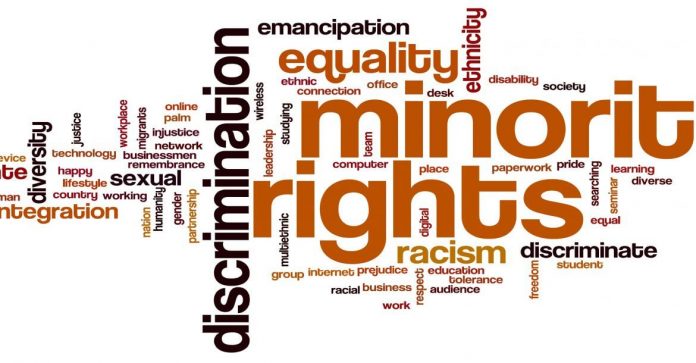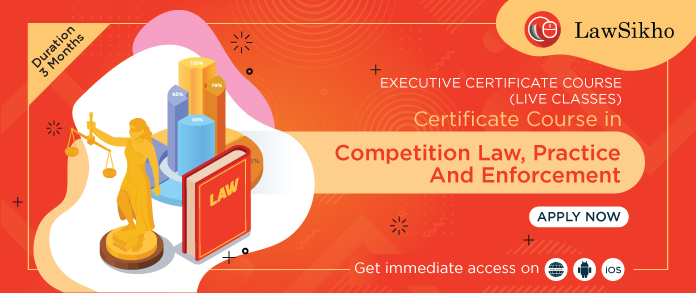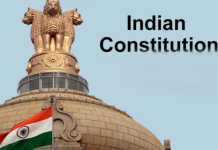This article is written by Shraileen Kaur, a student of ICFAI University, Dehradun. In this article, the author discusses in detail, the meaning, concept, significance and historical evolution of minority rights.
This article has been published by Sneha Mahawar.
Table of Contents
Introduction
In the 21st century, human rights play a prominent role in society. The presence of various minority groups with assorted inclinations towards certain cultures has led to changes in traditions, institutions as well as values of the society. This has also led to the introduction of several traditions and cultures in the local communities all around the globe.
Every nation is a member of international society and has to mandatorily adhere to several norms which are accepted by the international society. Initially, minority groups and their rights were discussed in the Vienna Congress. As of today, there is almost no nation where minorities do not live. There are numerous international and national documents and treaties concerning minorities and their rights. However, there is not even a single such treaty, convention, or statute which clearly defines what exactly constitutes minorities.
As per the figures provided by the United Nations, about 10 to 20 percent of the total population of the world constitutes a minority. Historically, minority groups were subjected to discrimination and cruelty. There are ample instances where these groups were excluded from social and political engagement.
The physical and psychological assault has been undertaken at a greater level against certain minority groups since the start of COVID-19, furthering the marginalization of these groups around the globe. In India, a multicultural society is threatened by several groups that dominate minorities.
The present article illustrates the meaning and definition of minority rights, historical evolution, and national and international perspectives on minorities.
Meaning and definition of minority
Minority refers to a distinct group in terms of racial, cultural, or ethical characteristics that exist collectively. However, such a group is presumed to be subordinate to the majority community. Subordinacy is the key trait of a minority group. It is assumed that minority status in a certain community is correlated with the population. This is not true. A group may be called a minority group even if it has more population than the dominating population. For instance, in South Africa during the period of apartheid, the population of the dominating group was lesser than the dominated group.
These are certain groups that are kept away from being classified as a minority group due to a lack of prominent characteristics. For instance, a group is formed for specific reasons, say, economic reasons, like a trade union. Such groups are seldom given the status of minority. However, these groups, although not given the status of a minority, have considerably occupied the significant economic and social advantages in the social system. Hence, the status and position of minority groups distinguish from one society to another depending on the social structure and power of the relative group.
A closed or open society plays a prominent role in the social mobility and status of minorities. A closed society refers to a society wherein the function and status of an individual cannot be changed. One of the best examples of a closed society is the traditional caste system in India. On the other hand, there is an open society that allows people to change their respective roles and status concerning the corresponding group. In a closed group following a hierarchical position, it is essential to maintain law and order in society. However, in an open group, the relations between the group members are quite competitive. Rank is provided to an individual not according to the social status of the whole group but as an individual member.
In the United States of America, black people are considered a minority group. Likewise in India, the Dalits, Muslims, and Sikh communities are considered to be minority groups. People from LGBTQIA+ communities, people with disabilities, and people being associated with certain political parties or groups may also be included under the category of minority groups. Similarly, on an international level, a minority group is categorized based on the economic ability of an individual or based on certain distinguished diseases like HIV or AIDS.
Definition of minority
Despite numerous declarations and policies in favour of minorities, there is no specific definition for the term minority. There are several instances where nations thought of arriving at a particular definition that can be widely accepted to define the word ‘minority’. However, they failed miserably as minorities depend on several factors that can be cultural, geographical, or linguistic.
The initial successful attempt was done by the Permanent Court of International Justice which define the term ‘minority’ as –
“A group of individuals living in a given locality or country, having a race, language, religion, and traditions in a sentiment of solidarity for preserving their traditions and maintaining their form of worship securing the instructions and upbringing of their children following the spirit and traditions of their race and mutually assisting one another.”
Another renowned scholar, Francesco Captors, being a member of the sub-commission of the United Nations on Prevention of Discrimination and Protection of Minorities gave a detailed study on minorities and concluded that minorities are –
“A group of numerically inferior to the rest of the population of a state in a non-dominant position whose members being nationals of a state possessed certain ethnic religious or linguistic characteristics which differ from those of the rest of the population and show if only implicitly a sense of solidarity directed towards preserving their culture, tradition, religion and language.”
Historical evolution of minority rights
The basic assumption of minority rights being a matter of international concern and not an internal affair of any particular country has been formed by several international organizations since 1990. This has further elaborated the justification for the formulation of several mechanisms, mandates and policies. Certainly, this has been a great setback for the dominating group reversing their long-standing position in the society and the end of the arbitrary reign.
In the past, there has been an increase in xenophobic discrimination particularly targeting Muslims, Jews, as well as other minority groups. Threats and inciting hatred directed at religious or linguistic minorities have risen dramatically in recent years. The assassination of lynching in the spirit of ‘vigilantism’ is regarded as an act of heroism.
The ‘minority issue’ was predominantly considered a matter of disputed minority groups throughout the first half of the 20th century. The issue of minority was centred around all those tribes, and ethnic groups who went on the opposite side of a modern border crossing when the Russian or Turkish regimes in Europe disintegrated into many newly formed sovereign republics. Foreign treaties were developed in response to these challenges to assure the mutual safeguarding of citizens in neighbouring nations. For example, Germany agreed to give indigenous Polish citizens living within its boundaries specific benefits and protections in exchange for Poland providing equivalent entitlements to ethnic Germans in the country. Under the League of Nations, this treaty-based framework of minority rights was expanded and a more robust international legal foundation was formed.
Unfortunately, this strategy failed in the 1930s, and it has been roundly repudiated after the Second World War. It only safeguarded minority groups who lived near a ‘kin community’ (It refers to the social organization which involves individuals related through affinal, consanguineal as well as foster ties.) that cared about them. Furthermore, the treaties might disrupt the situation when such a connection existed, they could have used the pact to invade and occupy poorer countries. As a result, after the Second World War, a different strategy was adopted. The fundamentals for post-war international relations were laid down with a fresh perspective. This novel strategy aimed to replace minority-specific entitlements with universal human rights.
Minority groups would be safeguarded passively, instead of actively, by ensuring basic legal and constitutional rights to all persons irrespective of their sense of belonging. Fundamental rights such as the right to free speech are practised in the presence of others which forms passive protection of minority groups. It offers social security to the minority groups by making their presence in society count. It was believed that if these independent human privileges are well-protected, no additional minority-specific protections are required. In essence, the post-war concept of ‘minority rights’ was criticized, claiming that it was equally superfluous and unstable. As a consequence, neither the United Nations Charter nor the Convention on Human Rights of 1948 made any mention of the rights of minorities. The same was replicated under several charters that were conducted in post-world war concerning human rights such as the American Declaration of the Rights and Duties of 1948 or the African Charter on Human and People’s Rights of 1981 or the European Convention on Human Rights of 1950.
Significance of minority rights
The rights of minorities form the basis of the representation of minority groups who are in a highly susceptible position in contrast to the majority members present in society. The main aim of minority rights is not just to protect this vulnerable group from unnecessary and malafide prosecution, violence, forced integration, or belligerence but to maintain their actual status in society i.e., the status of equality. This needs to be recognized that the rights provided to minorities are not certain privileges or entitlements but rather protection provided by the respective laws and statutes to ensure that the members of different communities live peacefully together. There should not be any place for prejudice or other negative elements. The rights of minorities serve as a shield that protects vulnerable groups and brings the present society to a particular level of equality where human rights are exercised equally and there is no place for anti-human elements.
The instance of European history is quite evident to show how providing protection to the minority groups plays a prominent role in securing law and order in the society. In a society where people have the right to choose their leaders, it is highly essential to respect every individual irrespective of their language, culture, traditions, religion, or other identities. Each person shall be recognized by a single identity i.e. a national identity. Despite being recognized as a national of a particular country one must have full right to exercise their religion, and culture, preserve and develop their identity the way they want. Cultural tolerance and open conversation are necessary to maintain diversity and prevent division by enrichment of every member of the society.
Specific measures are the need of the hour for all the minority groups irrespective of the place they are present. There is a need to bring equal status to these minorities. Consequently, minority rights ensure that the members of society have equal access to the respective rights which they can exercise. There is a balance of rights between the majority and minority members. An equal opportunity must be provided at all levels to the population at large. The envelope-like structure is needed while framing these minority rights to recognize and safeguard their identity and protect them from forced assimilation, cultural shock, and extinction of languages which form the foundation of historical global diversity.
Diversity and numerous identities must be recognised, safeguarded, and appreciated to avoid homogenization. As a result, affirmative intervention is necessary to preserve historical, ethnical, and linguistic diversity and recognize that minorities improve society as a result of their diversity. The engagement of minorities in the social and political arena plays a prominent role in combating social isolation and providing equal status to the desired community.
Participation must be substantial, not simply ceremonial, and must consider issues such as the under-representation of groups and grievances that may not be appropriately acknowledged. The engagement of women from minority groups is particularly concerning.
International perspective on minority rights
According to International law, indigenous people are also a part of minority groups. Such people may claim their respective minority rights. The expression and preservation of minority groups have been specified under international law. Certain principles recognize them, and such principles are called ‘The Principles of Minority Rights’. These principles act as a guiding light concerning – ‘Who all are included in the minority?’, ‘How to preserve them?’, ‘How to protect them?’.
Internationally, the major trend is not towards protecting them but towards providing them with rights that are equal to their counterparts. The principles of minority rights recognize the population of minorities which include people from different religions, and racial as well as ethnic characteristics.
As per these principles, there are certain standard rights concerning individuals who have significant ethnic-racial, or religious minorities. Such rights include the right of teaching in the native language.
Even though the words minority and ethnicity have been omitted from the United Nations Charter and the Universal Declaration of Human Rights, there are certain renowned organizations including the United Nations itself which recognize minority rights. Recently Part 3 and 4 of the first article of the charter along with Articles 55 and Article 65 of the United Nations Charter ratified in favour of minority rights. It recognizes the observation of fundamental rights and freedoms for the minority group without any discrimination on the basis of race, religion, language, etc.
United Nations and minority rights
From time to time the United Nations have specifically mentioned that minority rights form an essential part of the International Protection of Human Rights. It includes the preservation and protection of minorities at national and international levels, preserving their culture, language, rights, and freedoms. The United Nations have provided certain mandates and mechanisms which are specifically dedicated to the protection of minorities. The United Nations have a dedicated declaration in favour of minorities known as the United Nations Minorities Declaration which contains specific rights and duties which are expected to be adhered to by member nations. These rules and guidelines act as a guiding light while planning and decision-making in favour of minority groups. The declaration of the United Nations in favour of the rights of indigenous people makes a clear requirement for the states to accommodate and aid indigenous people in obtaining their consent. Such consent is essential to undertake before passing any developmental project which might impact their culture or habitat.
The initial legislative framework in favour of minority rights was done by the United Nation under International Covenant on Civil and Political Rights (ICCPR). It is a global treaty that includes Article 27.
Article 27 under ICCPR
‘In those states in which ethnic, religious or linguistic minorities exist, persons belonging to such minorities shall not be denied their rights, in coherence with the other members of their group, to enjoy their own culture, to profess and practice their religion, or to use their language.’
Other declarations by the United Nations in favour of minorities include the United Nations declaration on the rights of minorities which has made a requirement for its member states to protect the identities of minorities along with their existence. This declaration was adopted by the General Assembly resolution in 1992. It encourages the member states to promote the linguistic, religious, cultural and ethical identities of the minority groups.
Under Article 2(1) of the concerned declaration, minorities have been provided with a full-fledged right to practice their culture, religion, and language in any public or private place without being a victim of prejudice.
Article 3 of the United Nations declaration on the rights of minorities ensures the minority groups that they are free to exercise their individual and community rights without any discrimination.
In furtherance of the efforts to protect the minorities and their rights, the United Nations also formed the United Nations High Commissioner for Human Rights which promotes and protects human rights for all. It works in respect of the minority groups who are large in number in particular countries. It put effort to provide them with minority status. It follows the basic principle of equality and discrimination in favour of the population at large.
The preservation, protection, and promotion of the rights of minority groups also fall under the High Commissioner for Human Rights. The basic premise of this branch of the United Nations is that it includes not just documentation or text but also fieldwork. Precisely, the high commissioner is responsible for the implementation of these principles and charters. The United Nations High Commissioner is also required to engage with the respective governments of different nations to work together on the purpose of promotion and protection of minority rights.
Council of Europe
According to the Council of Europe, the national minorities’ status and their respective rights were given by the 12th protocol to the European Convention on Human Rights.
Several articles of the European Convention on Human Rights discuss specifically minority rights.
Article 1
‘Any legal right must be exercised without discrimination based on sex, race, colour, language, religion, political or other ideology, national or social origin, membership in a national minority, property, birth, or another status.
Any public authority shall not discriminate against anyone based on any of the factors listed in paragraph 1.’
In furtherance of the efforts by the Council of Europe, a European Charter for Regional or Minority Languages of 1992 was established. It instituted several mechanisms concerning the national minorities, their rights, and preservation. The orientation of the charter is towards a framework regarding minority protection. It also helps in providing education, communication, and legal assistance. The charter also promotes working in minority native languages for official use in local, state, and central administrations.
Later on, the Council of Europe incorporated the Framework Convention for the Protection of National Minorities (FCNM) in 1994. The convention specified standards for the preservation and safeguarding of minorities. The convention also embraces interculturalism and multilingualism. It also promotes the use of the native language as an essential right as per the International Covenant on Civil and Political Rights (ICCPR).
Article 14
‘The enjoyment of the rights and freedoms guaranteed by this Convention must be safeguarded without discrimination based on sex, race, colour, language, religion, political or other opinions, national or social origin, membership in a national minority, property, birth, or another status.’
In case of tensions and conflicts involving national minorities, a specific authority has been created by the Organization for Security and Cooperation in Europe. The organization has created a High Commissioner on National Minorities which addresses all such tensions and conflicts. in case of inter-ethnic tension or any other concerns regarding the structure are addressed by this Commission.
The High Commissioner also acts as an assisting agent by providing recommendations to the member states for aiding them in fulfilling their commitments and adhering to the norms. The high commissioner on national minorities is also responsible for publishing these recommendations and other guidelines for certain shared challenges which are faced by almost all the member states.
Minority rights in India
India is a diverse nation having a unique mosaic of numerous religions and traditions. From having innumerable castes and sub-castes to having more than eight hundred dialects, the diversification of India is known to the world. In India, where a democratic form of government is prevalent, minority rights are provided to the concerned group, and they enjoy these rights in the best possible manner.
History of minority rights in India
Initially, India had a major population of Hindu denominations, this is the reason India was called ‘Hindustan’ – A place where Hindus live. However, due to several invasions and wars, certain minority communities were created. For instance, Anglo-Indians, Sikhs, Muslims, Parsis, and Christians. From being a nation of Hinduism to an amalgamation of minority communities, the demography of India changed drastically.
India had many speakers in favour of minority rights from Dr. BR Ambedkar to the first prime minister of India, Pandit Jawaharlal Nehru. In 1947, an Objective Resolution was adopted unanimously in the national assembly. The resolution was regarding a framework for the protection of the minority, tribal and backward communities. This resolution was moved by Pandit Jawahar Lal Nehru. In 1948, the drafting committee of the constitution formed a specific part of the constitution in favour of minorities and their rights.
There have been several issues that are faced by the minority groups such as social isolation, less or no representation, discrimination, social taboos, communal conflicts, hate crimes etc.
In India, the rights of minority groups protect against discrimination based on their ethno-religious, ideological, or lingual identity. Minority members practice their native language and maintain and openly represent their sense of self.
Minority Rights and the Indian Constitution
The definition of ‘minority’ has not been provided under the Indian Constitution. The Indian Constitution includes Article 292 to Article 301 in Part XIV which states ‘ Special Provisions relating to Minorities’.
From time to time, several amendments were made to these provisions. Ultimately, no special right was provided to such communities except certain educational and culture-related rights.
Other than Part XIV of the Indian constitution, there are several other articles where the rights of minorities are protected and preserved.
Article 14 and 15
‘The State shall not deny to any person equality before the law or the equal protection of the laws within the territory of India, on grounds of religion, race, caste, sex or place of birth.’
As per Article 14, the state is expected to provide equal treatment and condemn discrimination based on sex, gender, religion, etc.
‘The State shall not discriminate against any citizen on grounds only of religion, race, caste, sex, place of birth, or any of them.’
According to Article 15, the state cannot discriminate among individuals based on their caste, race, ethnicity, etc.
Article 29 and 30
Articles 29 and 30 are enshrined under the Indian Constitution as cultural and educational rights. The interests of minority groups are protected under Article 29 of the Indian Constitution. Article 29(1) stipulates that any community living under India’s jurisdiction has the right to protect and propagate their language, literature, and tradition. Article 29 (2) bans refusal of admission to state-aided academic institutions based on race, caste, religion, or language.
This article safeguards the rights of citizens regardless of their ethnic or religious affiliation. Article 30 is a crucial piece of legislation for India’s minority groups. Article 30(1) grants minority groups the right to create and run an educational establishment for the preservation of their cultural identity.
As per Article 30(2), when providing aid, the state cannot discriminate against any minority-run academic institution, irrespective of faith or language.
In contrast to popular perception, Article 29 has a broader reach than Article 30 as Article 30 exclusively applies to religious as well as linguistic minorities, whereas Article 29 applies to all Indian citizens, along with the majority group. Article 29 is exclusively applicable to Indian citizens, whereas Article 30 applies to both Indian citizens as well as non-citizens.
Article 38 and 39
Article 38 requires the government to establish public stability based on justice—social, financial, and political—to promote the prosperity of individuals and to reduce disparities in wealth, prestige, and opportunity.
Free legal aid and equitable justice in different dimensions are stated in Article 39. It instructs the government to ensure that all people have stable employment, as well as a fair distribution of assets for the general welfare. It also provides for the avoidance of economic inequality, fair compensation for equal efforts, and the opportunity and resources for the progress of children.
Article 46
Article 46 of the Constitution states that the government has the authority to take the necessary steps that are essential to promote the economic and educational progress of the weaker parts of the population, as well as to safeguard them from social inequality and oppression.
Reservation for the protection of minorities
The Indian constitution has ample articles which mention the reservation. Initially, when the constitution was enforced in 1950, no special provisions regarding reservation were provided to these minorities in any governmental authority or private entity.
Later on, under Article 30 of the Constitution reservations for the protection of the rights of minorities were added.
Currently, there is no reservation in the Administrative Posts as well as Services offered by the Government of India, and also for entrance into Central Academic Institutions for Minority Communities. The same is proclaimed by the Central Government under Section 2(c) of the National Commission for Minorities Act, 1992. Moreover, under Section 2(c), the Central Government has set aside a sub-quota of 4.5 percent for minority groups. However, this sub-quota was challenged before the Supreme Court of India, and the case is currently pending.
Important case laws
Bal Patil v. Union of India (2005)
In this case, a question was raised before the apex court regarding the determination of the status of minorities. The Supreme Court in this case held that the State has the power to determine minorities based on language or religion. The judgment of this case also acted as a guiding light in the TMA Pai Foundation case.
TMA Pai Foundation v. the State of Karnataka (2003)
In this case, the following issues were raised –
- Regarding the factors to be considered while giving the status of a minority to a particular group.
- Regarding the provisions of establishing a minority-based educational institution.
- Regarding the establishment of an educational institution by the minority group without any intention of earning profit.
The Supreme Court in this case held that a religious or linguistic minority can only be provided with the status of ‘minority’ by considering the factor of the demography of the concerned region. The total population of the country will play no role in providing a minority status to a community.
Answering the question of the establishment of educational institutions for non-profits, the court stated that despite the fact there is no generation of profit, the establishment of such institutions shall be considered an ‘occupation’. The reason behind considering these establishments under ‘occupation’ is that when an individual is engaged in such an institution there is a mission attached to it. This mission is to empower the lives of others. Also, the court acknowledged Article 30(1) as well as Article 19(1)(g) and stated that education is a charitable activity where the motive of earning profit is absent. Hence, setting up any educational institution for a non-profit purpose will come under ‘occupation’.
Managing Board of Milli Takimi Mission Bihar and others v. State of Bihar and others (1984)
In this case, the question was raised whether running a minority institution amounts to fundamental rights or not. The Apex Court in this case held that maintaining and running a minority institution is a fundamental right. This right is as significant as other rights available to the people of the country. Any denial regarding recognition by the state without any justification will amount to infringement of fundamental rights as per Article 30(1) of the Indian Constitution.
P.A. Inamdar v. the State of Maharashtra (2002)
In this case, the supreme court stated that reservation is not pertinent in the admission of students in minority institutions. The Court further stated that any statutory authority does not have the power to make reservations in any academic institution. The sole process of admission shall be based only on merit.
DAV College, Bathinda v. State of Punjab (1971)
In this case, the question was raised regarding the interference of Article 29 in the ambit of Article 30. The five-judge bench of the Supreme Court held that minority communities have the right to establish educational institutions as per their own free will. This right also includes teaching in their native language and having a curriculum based on their norms and values. The court further stated that a university must have the authority to give suggestions for the qualifications of the University Staff. However, the ultimate decision regarding selection remains in the hands of minority institutions themselves.
Conclusion
Presently, several institutions and organizations are the voice of these minority groups. These minorities have a vast history of aristocracies, discrimination, and cruelty. To preserve the minorities, it is essential to follow the 3Cs – commitment, connectivity, and coherence.
As no organization has explicitly defined ‘minority’, it is need of the hour to at least have a framework that can come under the ambit of the term ‘minority’. Even today, there are several places where minority groups exist but are dwindling. They lack representation and rights. Numerous statutes in the world are in contradiction to minority rights.
Unfortunately, hatred and discrimination against these communities are widespread. Hence, to maintain peace and preserve heritage and traditions, we all must strive to promote equality and acceptance. The political parties must refrain from using religion and caste as a tool for gaining more votes in the elections. Along with this, the concept of the national minority should be emphasized to promote individual liberty and strengthen minority communities. Detailed legislation against hate crimes should be introduced at the global level which not only acts as a deterrent against these crimes but also promotes brotherhood. For instance, the latest decriminalization of homosexuality has displayed empathy towards the LGBTQIA+ community. Hence, the above-mentioned recommendations must be considered. Also, an AGIL framework (Adaptation, Goal attainment, Integration and Latency) is the need of the hour to tackle the situation in the best possible manner.
Frequently asked questions
What method is used by the Government of India in identifying the Minority concentration areas (MCAs)?
The government of India used the method of the census to know the areas of minority concentration. Currently, the government uses the data provided by the 2001 census for identifying minority concentration areas.
Which is one of the most extensive programs flagged in India regarding minorities and their welfare?
The prime minister’s fifteen points program has been launched recently in favour of minority groups and their upliftment.
Which article of the Indian constitution protects the minority communities in India?
In the Indian Constitution, Article 29 and 30 protects the minority groups and promotes their upliftment.
References
- https://blog.ipleaders.in/minority-rights-constitution-india/
- https://www.researchgate.net/publication/305765665_The_Rights_of_Minorities_in_International_Law
- https://www.researchgate.net/publication/310908911_Trends_of_minority_rights%27_protection_in_the_countries_of_the_Adriatic_area_and_the_Republic_of_Macedonia_comparative_analysis_and_perspectives
- https://www.minorityaffairs.gov.in/
Students of Lawsikho courses regularly produce writing assignments and work on practical exercises as a part of their coursework and develop themselves in real-life practical skills.
LawSikho has created a telegram group for exchanging legal knowledge, referrals, and various opportunities. You can click on this link and join:
Follow us on Instagram and subscribe to our YouTube channel for more amazing legal content.
 Serato DJ Crack 2025Serato DJ PRO Crack
Serato DJ Crack 2025Serato DJ PRO Crack














 Allow notifications
Allow notifications



